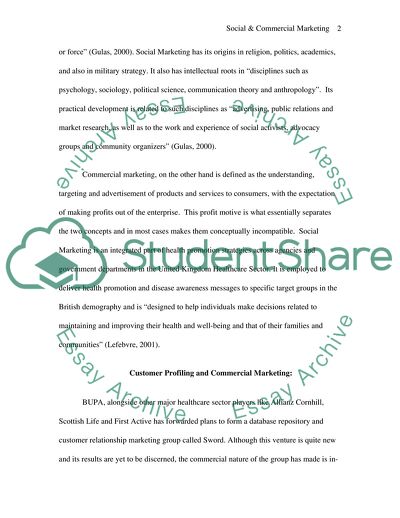Cite this document
(Differences between the Social Marketing and Commercial Marketing Essay, n.d.)
Differences between the Social Marketing and Commercial Marketing Essay. https://studentshare.org/marketing/1712003-significant-differences-between-the-worlds-of-social-marketing-and-commercial-marketing-mean-that-the-transfer-of-commercial-marketing-concepts-into-the-socia
Differences between the Social Marketing and Commercial Marketing Essay. https://studentshare.org/marketing/1712003-significant-differences-between-the-worlds-of-social-marketing-and-commercial-marketing-mean-that-the-transfer-of-commercial-marketing-concepts-into-the-socia
(Differences Between the Social Marketing and Commercial Marketing Essay)
Differences Between the Social Marketing and Commercial Marketing Essay. https://studentshare.org/marketing/1712003-significant-differences-between-the-worlds-of-social-marketing-and-commercial-marketing-mean-that-the-transfer-of-commercial-marketing-concepts-into-the-socia.
Differences Between the Social Marketing and Commercial Marketing Essay. https://studentshare.org/marketing/1712003-significant-differences-between-the-worlds-of-social-marketing-and-commercial-marketing-mean-that-the-transfer-of-commercial-marketing-concepts-into-the-socia.
“Differences Between the Social Marketing and Commercial Marketing Essay”. https://studentshare.org/marketing/1712003-significant-differences-between-the-worlds-of-social-marketing-and-commercial-marketing-mean-that-the-transfer-of-commercial-marketing-concepts-into-the-socia.


